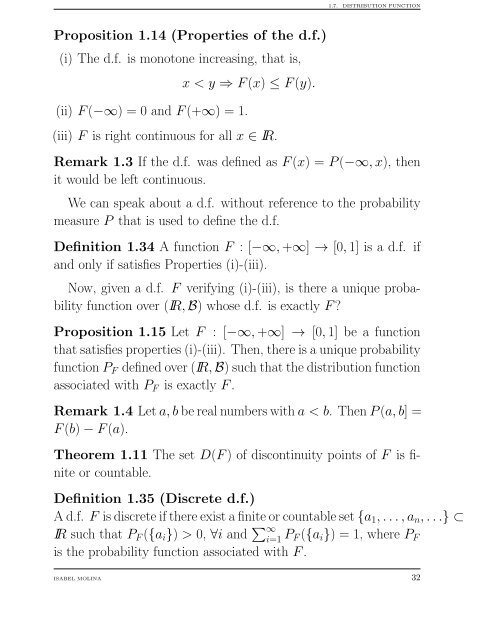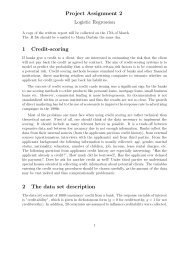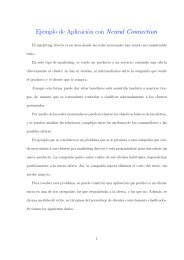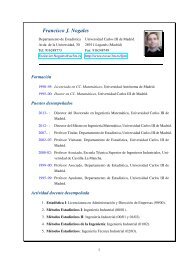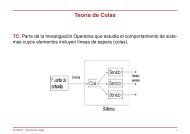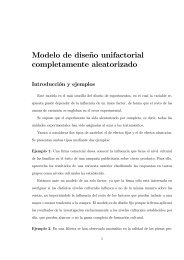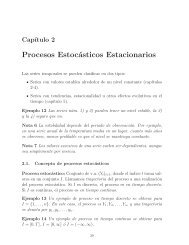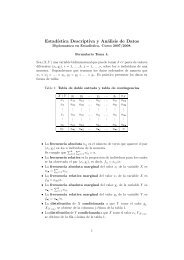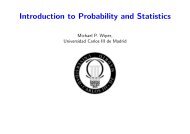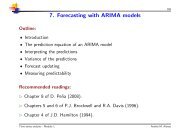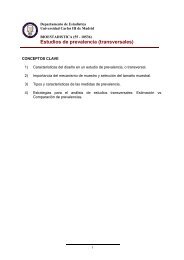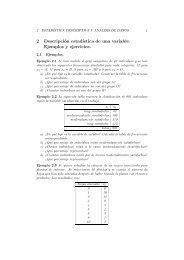Slides Chapter 1. Measure Theory and Probability
Slides Chapter 1. Measure Theory and Probability
Slides Chapter 1. Measure Theory and Probability
Create successful ePaper yourself
Turn your PDF publications into a flip-book with our unique Google optimized e-Paper software.
<strong>1.</strong>7. DISTRIBUTION FUNCTION<br />
Proposition <strong>1.</strong>14 (Properties of the d.f.)<br />
(i) The d.f. is monotone increasing, that is,<br />
(ii) F(−∞) = 0 <strong>and</strong> F(+∞) = <strong>1.</strong><br />
x < y ⇒ F(x) ≤ F(y).<br />
(iii) F is right continuous for all x ∈ IR.<br />
Remark <strong>1.</strong>3 If the d.f. was defined as F(x) = P(−∞,x), then<br />
it would be left continuous.<br />
We can speak about a d.f. without reference to the probability<br />
measure P that is used to define the d.f.<br />
Definition <strong>1.</strong>34 A function F : [−∞,+∞] → [0,1] is a d.f. if<br />
<strong>and</strong> only if satisfies Properties (i)-(iii).<br />
Now, given a d.f. F verifying (i)-(iii), is there a unique probability<br />
function over (IR,B) whose d.f. is exactly F?<br />
Proposition <strong>1.</strong>15 Let F : [−∞,+∞] → [0,1] be a function<br />
thatsatisfiesproperties(i)-(iii). Then,thereisauniqueprobability<br />
functionP F definedover(IR,B)suchthatthedistributionfunction<br />
associated with P F is exactly F.<br />
Remark <strong>1.</strong>4 Leta,bberealnumberswitha < b. ThenP(a,b] =<br />
F(b)−F(a).<br />
Theorem <strong>1.</strong>11 The set D(F) of discontinuity points of F is finite<br />
or countable.<br />
Definition <strong>1.</strong>35 (Discrete d.f.)<br />
Ad.f. F isdiscreteifthereexistafiniteorcountableset{a 1 ,...,a n ,...} ⊂<br />
IR such that P F ({a i }) > 0, ∀i <strong>and</strong> ∑ ∞<br />
i=1 P F({a i }) = 1, where P F<br />
is the probability function associated with F.<br />
ISABEL MOLINA 32


